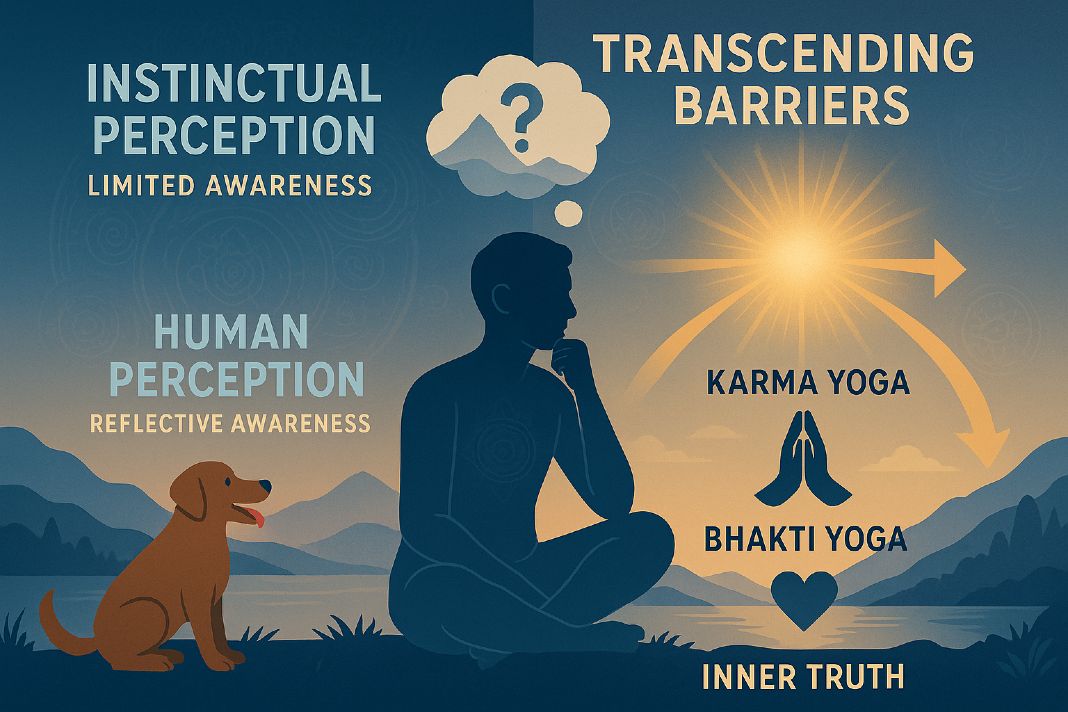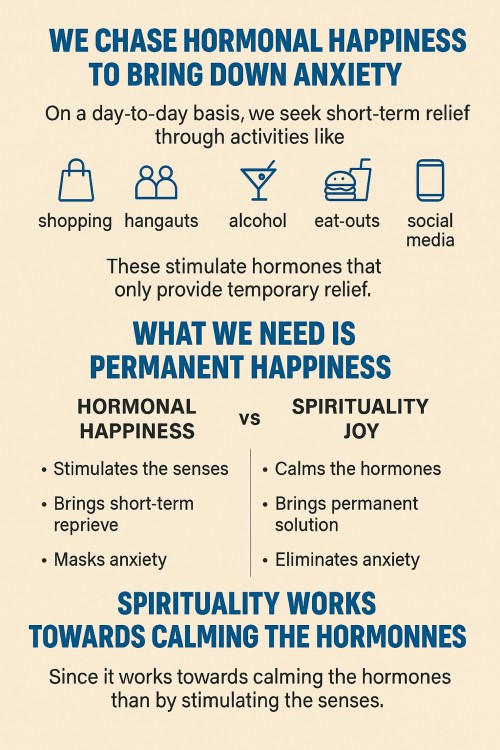Role Pressure & Conditioning (From Psychology & Neuroscience):
- From childhood, especially through schooling, we are conditioned into a cycle of waking up, rushing, performing, and repeating.
- This creates neural pathways of routine behavior, reinforced by reward–punishment mechanisms (grades, approval, salary, etc.).
- This conditioning becomes automatic — we get up not from joy, but from obligation and pressure.
- A baseline anxiety gives us the needed adrenaline push to keep us going.
“The brain is a prediction machine. Once trained, it runs on habitual loops.”
— Lisa Feldman Barrett, How Emotions Are Made
🧠 Our Mind Uses Anxiety as a Motivator
🔬 Neuroscience & Psychology View:
1. Anxiety as Survival Tool
Anxiety evolved as a protective mechanism — to keep us vigilant, responsive to threats, and ready to take action.
“Anxiety is the price we pay for the ability to imagine the future.”
— Daniel Gilbert, Harvard psychologist
2. Amygdala & Fear Response
-
- The amygdala, a part of the brain’s limbic system, is wired to detect threats.
- It overrides rational thinking when activated, triggering a stress response even to non-physical threats like public speaking or job loss.
“The amygdala is like a smoke detector — quick to respond, but it can’t always tell a real fire from burnt toast.”
— Joseph LeDoux, neuroscientist
3. Default Mode: Anxious Alertness
Modern neuroscience confirms that our brains are negativity-biased to keep us safe:
-
- We overestimate threats.
- We ruminate on the past or worry about the future.
- Studies show mild anxiety is a baseline state for many people.
📊 Everyday Anxiety Scale (1–10):
Why We’re Above 5 Most Times
Humans often operate with baseline anxiety above 5 due to: This baseline gets worsened by:
| Anxiety Trigger | Nature of Fear |
| Career uncertainty | Fear of failure, irrelevance |
| Financial insecurity | Fear of poverty, survival |
| Future unpredictability | Fear of the unknown |
| Self-esteem & image | Fear of rejection, not being enough |
| Peer competition | Fear of inadequacy, comparison |
| Social environment | Fear of judgment, exclusion |
| Physical threats | Health, accidents, aging |
- Overexposure to social media
- News cycles of doom
- Lack of deep connection or grounding
🧠 We Chase Hormonal Happiness to Soothe Anxiety
🔬 Modern Life: A Hormone-Driven Escape
Most of our daily choices — shopping, binge-watching, social media, eating out, drinking, casual hangouts — are not just for fun.
They are strategies to temporarily relieve inner restlessness or anxiety, caused by:
- Uncertainty about future
- Insecurity or self-comparison
- Existential boredom
- Social pressure and FOMO
These activities work by triggering hormones:
| Activity | Hormone Triggered | Effect |
| Shopping | Dopamine | Reward anticipation |
| Social media | Dopamine, Oxytocin | Validation & bonding |
| Eating/sugar | Dopamine, Serotonin | Pleasure, mood lift |
| Alcohol | Dopamine, GABA | Short calm, later crash |
| Hangouts/parties | Oxytocin, Dopamine | Belonging, distraction |
But the relief is temporary. It doesn’t eliminate the cause of anxiety — it pauses the symptom.
🧠 “We’re not addicted to substances — we’re addicted to relief.” – Dr. Gabor Maté
- On a scale of 1 to 10, how anxious do you usually feel each day?
- What’s one thing that helps you stay calm or grounded?
– From Dr. Vis Desk
Did you subscribe to our Daily newsletter?
It’s Free! Click here to Subscribe!
Reference: Medium

















